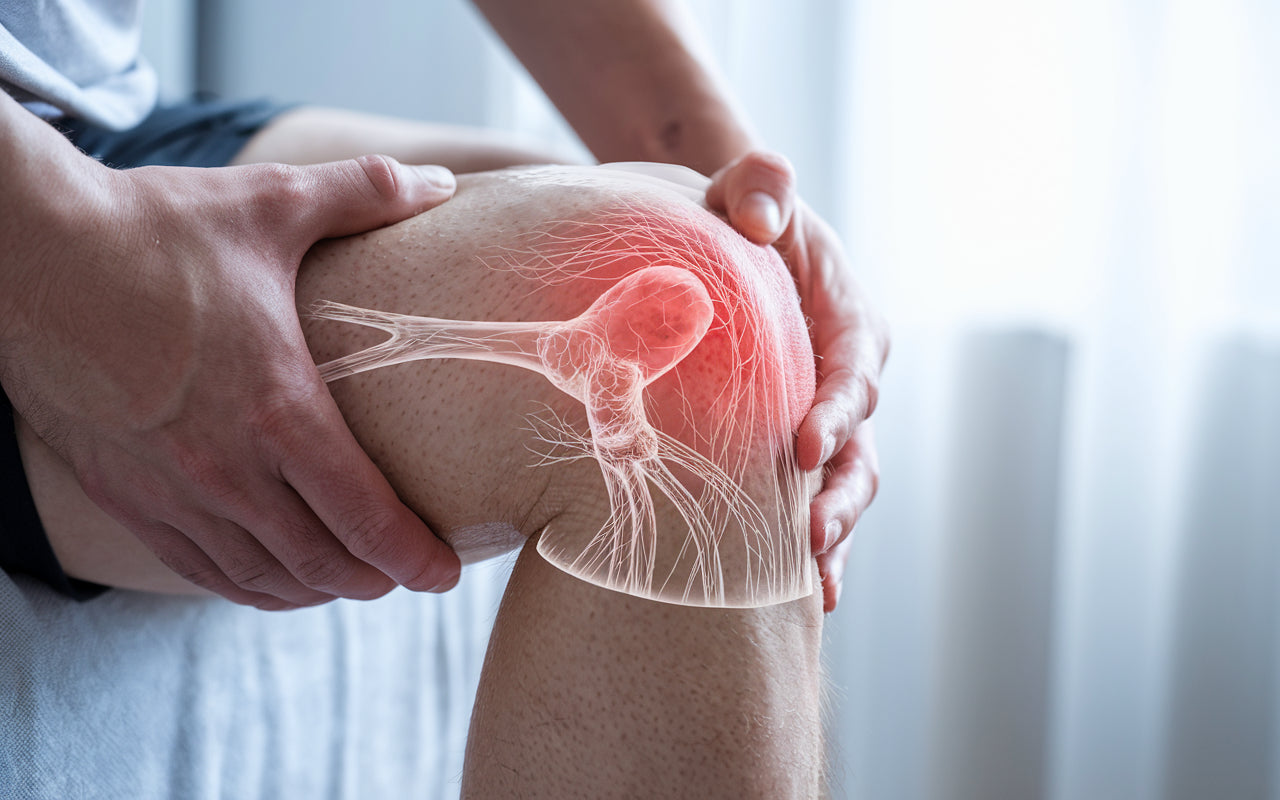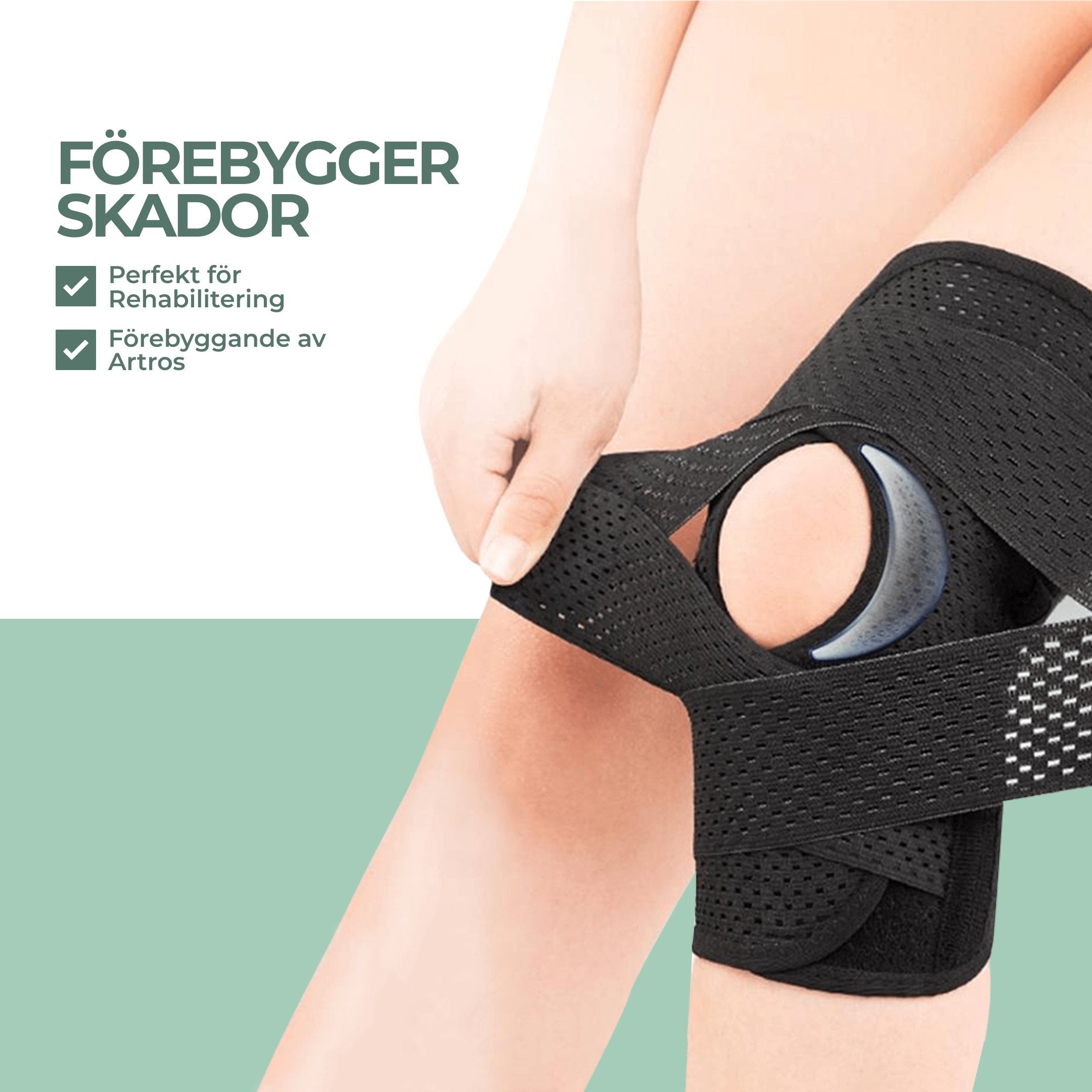Knæ ut av ledd: Behandling, sykemelding og forebyggende tiltak

When your kneecap dislocates, also known as patellar luxation, it can be a painful and distressing experience. This article reviews treatment options, sick leave periods, and how to prevent repeated episodes of knee dislocation.
Dislocated knee treatment: Physiotherapy, surgery and pain relief for patellar luxation
When the kneecap dislocates or is dislocated, it is important to act quickly. The emergency treatment for a patellar dislocation often involves doctors manipulating the kneecap back into place. In emergency situations, the following methods can be used:
- The RICE method: Rest, ice, compression, and elevation reduces swelling and pain. This is a basic measure for managing an acute patellar dislocation.
- Pain relief: Using over-the-counter pain relievers can help alleviate the pain that occurs when the knee is dislocated.
- Physiotherapy: After the acute phase, rehabilitation exercises are important. Physiotherapy helps strengthen the muscles surrounding the knee, keeping the kneecap in place and reducing the risk of the knee dislocating again.
- Surgery: In cases of repeated falls or serious injuries, surgery may be necessary. Surgery can realign the kneecap and repair damage to the cartilage, ligaments, and other structures around the thigh bone. Read more about unstable knees and their symptoms here .
Sick Leave for Knee Dislocation: Guidelines for Recovery and Work Adaptation
Sick leave is particularly important for those who suffer from a patellar dislocation. The period of sick leave is determined by the severity of the injury:
- Non-knee-stressing work: Up to 6 weeks may be enough for a minor injury.
- Knee-stressing jobs: For jobs where you often stand or walk, recovery can take up to 3–4 months.
- After surgery: When surgery is performed to correct a kneecap that is dislocated or dislocated, kneecap recovery can take 3–6 months or longer.
It is important to discuss with your doctor and employer the possibilities for adapted work tasks during the recovery period. For more information about other knee-related injuries, see Meniscus Injury – Symptoms and Treatment .
Preventive measures for repeated knee dislocations
If your knee has dislocated several times, it is important to take preventive measures:
- Strength training for quadriceps and hamstrings
- Mobility training for the muscles around the knee
- Use of knee pads with splints, such as KnäKomforten™
- Technique training for correct landing and turning
- Regular check-ups with a doctor or physiotherapist
Another common condition that can cause knee problems is patellofemoral pain syndrome (PFPS) , which often requires similar preventive measures.

Knee Comfort™ with splints : An effective aid
An effective knee brace is essential for people with a history of patellar luxation or kneecap dislocation. The Knee Comfort™ with Splints is designed to:
- Adapt to the unique shape of your knee with an adjustable fit for optimal care.
- Prevent the kneecap from dislocating by offering support that keeps the kneecap firmly in place.
- Reduce pain during movement and provide stabilization of the knee joints.
- Used both during physiotherapy and in everyday life to prevent new surgery or further damage to the femur.
If you are also experiencing other knee problems such as swelling, it may be helpful to read more about causes of swollen knees .
Buy nowConclusion
Managing a dislocated knee and preventing patellar luxation requires a combination of acute interventions, long-term rehabilitation and preventive strategies. By using physiotherapy, carefully performed exercises and aids such as an effective knee brace – such as the KneeComfort™ with splints – you can ensure that the kneecap is kept in place. This reduces the risk of the knee becoming dislocated, regardless of whether it is a single blow to the kneecap or recurring knee dislocating incidents. In the event of an acute patellar luxation, it is important to get the right care quickly and to follow the recommended treatment to avoid future injuries. By being aware of both the causes and preventive measures, you can improve the function of the knee and ensure a stable recovery.
A related problem that is often confused with knee dislocation is pain on the outside of the knee , which can be due to completely different structures in the knee joint.
Frequently Asked Questions (FAQ)
How long does it take to recover from a dislocated knee?
Recovery time varies depending on the severity of the injury and the treatment method. For less severe cases, it can take 4-6 weeks, while more complicated cases or those requiring surgery can take several months. Full recovery and return to sports can take up to 6 months or longer.
Can I exercise with a dislocated knee?
After the acute phase and under the supervision of a physiotherapist, you can gradually start light exercise. Initially focus on exercises that strengthen the muscles around the knee without putting too much strain on the joint. Using the Knee Comfort™ with splints can provide extra support during exercise. It is important to listen to your body and not overexert your knee.
How effective is Knee Comfort™ with splints in preventing the knee from dislocating again?
The Knee Comfort™ with braces can be very effective in preventing repeated dislocations by providing extra stability and support to the knee joint. It helps to keep the kneecap in place and reduces the risk of incorrect movements. However, it is important to remember that the knee brace should be used in combination with strength training and proper technique for best results in preventing future injuries.

